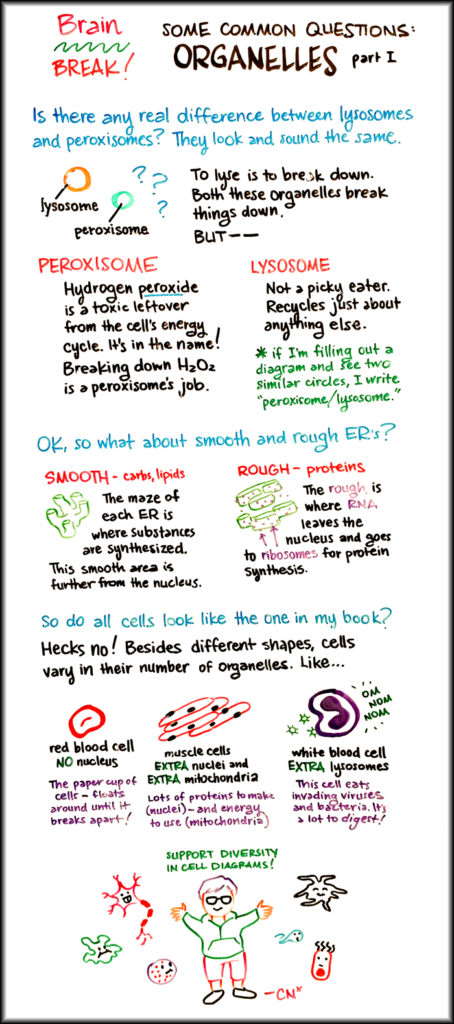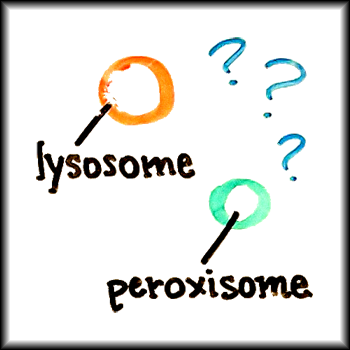
Q: Is there any real difference between lysosomes and peroxisomes? They look and sound the same.
A: To lyse is to break down. But:
- Peroxisome. Hydrogen peroxide is a toxic leftover from the cell’s energy cycle. It’s in the name! Breaking down H2O2 is a peroxisome’s job.
- Lysosome. Not a picky eater. Recycles just about anything else. (If I’m filling out a diagram and see two similar circles, I write “peroxisome/lysosome”.
Q: Okay, so what about smooth and rough ER’s?
A: For starters, the smooth is associated with carbs and lipids, and the rough with proteins.
- Smooth: The maze of each ER is where substances are synthesized. This smooth area is further from the nucleus.
- Rough: The rough is where RNA leaves the nucleus and goes to ribosomes for protein synthesis. See all the R’s? Rough, RNA, ribosomes. On diagrams, the rough ER is illustrated similarly to the smooth, except covered in little dots. Each of these dots represents a ribosome.
Q: So do all cells look like the one in my book?
A: Hecks no! Besides different shapes, cells vary in their number of organelles. Like…
- Red blood cell: No nucleus. This is the paper cup of cells – floats around until it breaks apart!
- Muscle cells: Extra nuclei and extra mitochondria. They have lots of proteins to make (in the nuclei) and energy to use (created within the mitochondria).
- White blood cell: Extra lysosomes. This cell eats invading viruses and bacteria. It’s a lot to digest!
Support diversity in cell diagrams! -CNx
